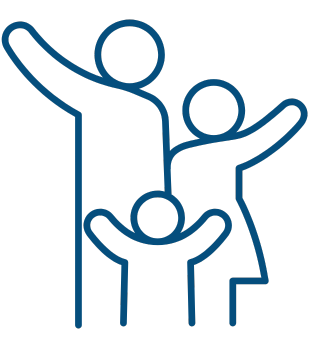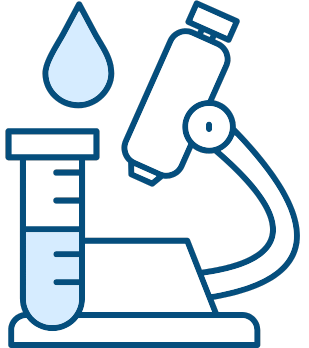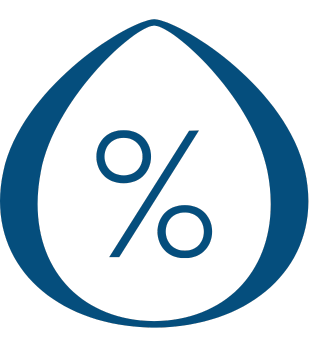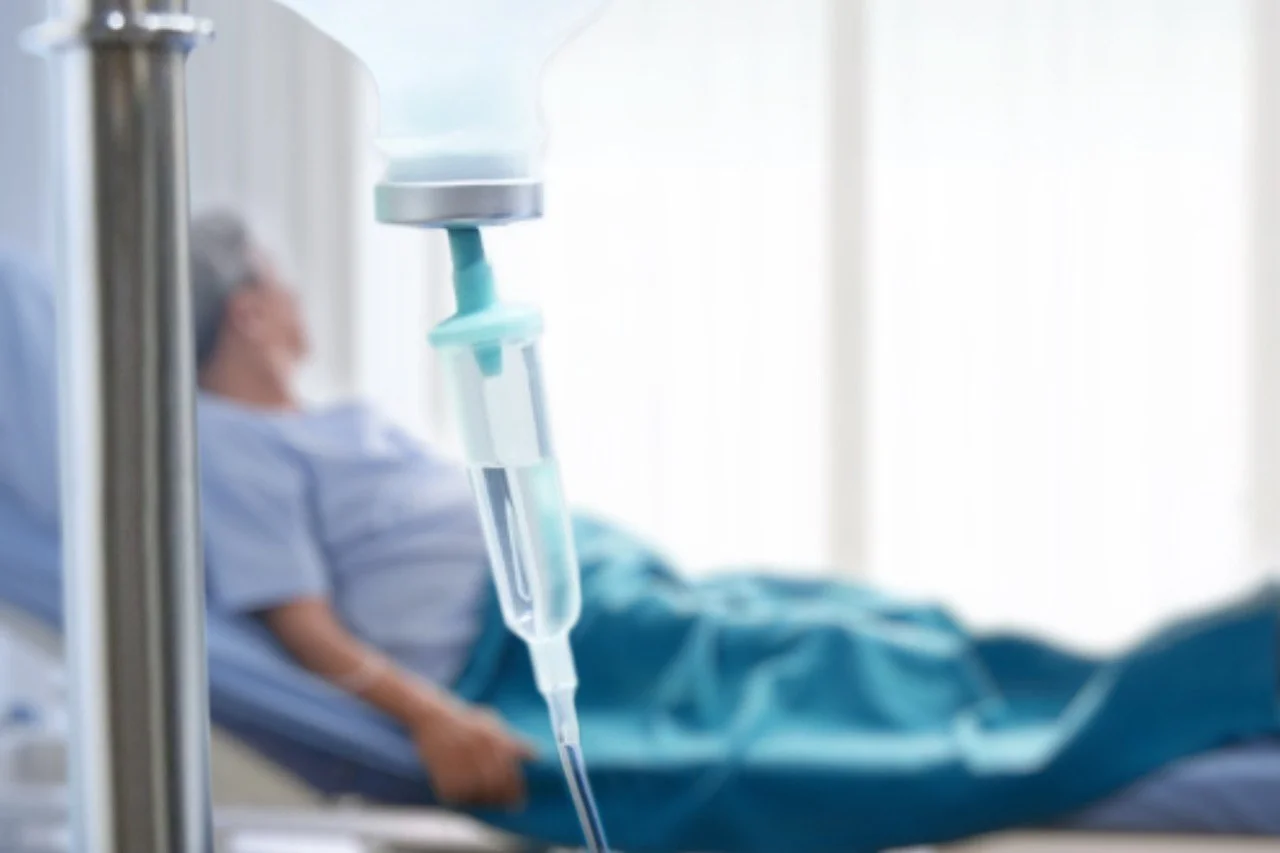Surgery, no matter what it is, is always a difficult and often frightening phase in everyone’s life. Not only does it pose additional health risks, but it also requires major life changes for the coming weeks or even months, depending on the complexity of the operation. It is therefore particularly important to prepare for it properly: to be well informed about the operation, the healing process and rehabilitation. Adequate preparation and a thorough understanding of what lies ahead can help reduce anxiety and ensure a smoother recovery.
What to do after surgery?
Recovery after surgery requires much more than just time. It is a complex process that requires careful care, rest and active rehabilitation. Rest, pain control and wound protection are already a priority in the first hours after surgery, and the first week is a crucial period that determines the healing process. So here’s what you can expect and what you should do in the first month after an interventional surgical procedure.
The first day after surgery
The first day after surgery can seem like the longest day of your life, regardless of the procedure performed. After surgery, the patient’s body is exhausted from the anaesthesia and the incisions made during surgery. Movement may be limited or painful, so it is likely that bed rest will be recommended for the first day, along with painkillers and other medications prescribed by the doctors. Usually, post-operative pain is at its worst in the first 24-48 hours.
However, depending on the type of surgery, doctors may recommend that you start moving as soon as possible. Early movement is beneficial because too long in bed and restriction of movement can cause blood to pool in the legs, which increases the risk of swelling and thrombus. Therefore, leg exercises may be recommended to help prevent blood clots. This can include simple actions such as bending the knee or ankle and rotational movements of the feet. Compression stockings or blood thinners may also be prescribed to reduce the risk of thrombus. It is also very important to keep the wound dry for the first day after surgery.
First week after surgery
The first week after surgery is crucial for proper healing and recovery. Here are the key points you should pay attention to during this period:
Pain control
When you return home after surgery, start taking the painkillers prescribed by your doctor immediately and take them regularly for the first four days. Reduce your use according to the intensity of the pain. It is important to take your painkillers before going to bed, as the post-operative nerve block may weaken overnight.
Wound care
Wounds after small surgical incisions usually heal within 5-7 days when the wound edges are smooth, non-infected and sutured without tension. To avoid wetting the wound, it is advisable to take a shower rather than a bath for the first week after surgery, as the softer water stream is less irritating to the wound.
If the wound does not heal due to infection or other complications, the healing process may become more complicated and take longer. In this case, it is very important to keep the wound in a sterile environment, which is why it is necessary to apply a sterile dressing. If the wound does not improve or if additional symptoms appear, it is important to seek medical attention immediately.
Rest
Time to rest after surgery is essential as the body is under additional stress and needs time to recover. While it is important to start moving as soon as possible, it is also important to get some sleep and take a few days off from work and other energy-demanding daily activities.
Giving up harmful habits
Smoking significantly increases the risk of post-operative complications and slows down healing. If possible, give up smoking completely after surgery.
Infection
The risk of infection after surgery is rare, but if you experience increasing pain, fever or notice increased swelling and redness, contact your doctor immediately.
First month after surgery
The first month after surgery is an important period when the body is actively healing and adjusting to the changes. During this phase, it is important to follow your doctor’s recommendations for suture care, wound protection, physical activity, medication and proper nutrition. The following are the main points to consider in the first month after surgery.
Threads
Suture removal or trimming is usually carried out at a follow-up visit two weeks later. However, surgeons are increasingly choosing to use Vicryl Rapide dissolving sutures, which dissolve spontaneously within 2-3 weeks after surgery, eliminating the need for a separate removal visit.
Wound care
After suture removal, the wound is always protected with a sterile dressing that can be removed after 24 hours. The purpose of the dressing is to protect the wound from abrasion, dryness and infection. If the wound is dry after removal of the dressing, it is not necessary to apply a new dressing.
Scars
Scarring is inevitable after surgery, but surgeons use special techniques and tools to make scars as thin and visible as possible. After surgery, it is essential to protect the operated areas from direct sunlight by using creams with SPF.
Exercise and movement
After the first week, a gradual increase in physical activity is recommended to maintain muscle tone and joint mobility. Proper exercise can help you recover faster and reduce the risk of complications. Always follow your doctor’s recommendations for exercise and make sure you stay within the prescribed limits.
Medication and treatment
Continue taking painkillers as needed, but try to take them only when necessary. If the pain becomes manageable, gradually reduce your use. If long-term drug therapy, such as anti-inflammatory drugs or antibiotics, is prescribed, the doctor’s instructions must be strictly followed. Also, take all medicines and supplements prescribed to you according to your doctor’s instructions.
Nutrition and health
Nutrition plays an important role in your recovery. Eat a balanced diet rich in protein, vitamins and minerals to help wounds heal and to strengthen your immune system. Hydration is vital, so drink plenty of water to maintain proper body functions and facilitate metabolism.
Ways to promote healing
Healing after surgery can be a complex and lengthy process, so finding effective ways to promote recovery and reduce pain is crucial. Below we will discuss some innovative methods to promote healing that are important for patient rehabilitation. These treatments are designed not only to accelerate wound healing but also to improve the overall health and well-being of patients.
Anti-inflammatory therapy – Anti-Inflammation drip
One way to relieve pain and speed up healing after surgery is the popular anti-inflammatory therapy drip. This therapy, which uses unique preparations supplemented with vitamins B1, B6, C and magnesium complex, not only effectively reduces inflammation, but also strengthens the immune system, soothes the nervous system and gives you the energy you need to get back to normal activities.
Bar chamber
Hyperbaric Oxygen Therapy (HBO) is an effective way to improve your health and speed up your recovery after surgery. Using a special bar chamber where patients breathe 94% pure oxygen, the body absorbs up to five times more oxygen than normal. This intense oxygen saturation of the blood promotes faster wound healing, reduces inflammation and infection, and improves circulation and metabolism. This helps to effectively repair tissues after injuries and surgery, strengthening the overall condition of the body.
Ozone therapy
Ozone therapy is an effective non-medicated way to improve health and promote recovery after surgery. Using a special generator, ozone is extracted from medical oxygen, which is then introduced back into the patient’s bloodstream. This mixture has a strong anti-inflammatory effect and benefits the vascular and circulatory systems, as well as strengthening the immune and nervous systems. Ozone therapy is safe, free of side effects and allergies, and patients can feel an improvement in their health after the first treatment.
Rehabilitation by type of surgery
After surgery, rehabilitation is a key part of the recovery process. However, it can vary depending on the type of surgery, as each procedure requires a specialised recovery plan. Below is information on rehabilitation after different types of surgery, including heart, joint, appendicitis and spinal surgery.
Rehabilitation after heart surgery
Current legislation in Lithuania stipulates that patients are referred to cardiac rehabilitation after acute cardiac events such as myocardial infarction or unstable angina, as well as after cardiac surgery and interventions. This rehabilitation usually takes place in specialised hospitals, where patients receive inpatient treatment for two to three weeks.
Rehabilitation after joint surgery
Rehabilitation after joint surgery, including knee meniscus, hip joint or cruciate ligament surgery, is highly personalised. It is tailored to each patient’s medical condition and lifestyle, which is particularly important for athletes, for whom a fast and efficient recovery is essential. Each patient is discharged from hospital with a personalised rehabilitation plan that ensures optimal recovery and a smooth return to daily activities.
This rehabilitation plan includes not only painkillers but also a wide range of therapies, from compression therapy to physiotherapy, occupational therapy and massage. Orthopaedic devices are also prescribed to ensure joint stability. Particularly after arthroplasty, it is important to wear a hip splint, which not only stabilises the joint and improves muscular coordination, but also creates a distraction effect, with cross-leggedness strictly forbidden to avoid dislocation.
The post-operative period and healing can take up to a year. Adequate physical activity, exercise and special exercises are essential in the post-operative period. It is also important to remember that although the implant restores the joint’s function, there are some important instructions to follow, such as:
- Avoid heavy lifting and activities that require strength.
- Avoid lifting objects off the ground with your legs outstretched after surgery.
- Keep the operated leg elevated when sitting to reduce swelling.
- Regularly perform light knee flexion exercises.
- Avoid lifting the knee above hip level.
- Do not allow the hip joint to be bent more than 90 degrees.
- Avoid heavy physical loads such as jumping, running or lifting heavy objects.
- Walk regularly to maintain muscle tone and joint mobility.
- Choose comfortable footwear to reduce pressure on the operated foot.
These recommendations will help ensure a smooth recovery and reduce the risk of complications after surgery.
Rehabilitation after appendicitis surgery
One of the main advantages of appendicitis surgery is the short recovery period; many patients leave hospital within a few days. If the operation is performed on time, you can go home within 24 hours. In more complicated cases, such as peritonitis, recovery can take up to a week.
There is no rehabilitation after you return home, but it is important to follow the doctor’s instructions and basic recommendations:
- Follow the dietary advice given to you.
- Laxatives can be taken for the first few days.
- Drink plenty of water to avoid constipation.
- Make sure you get enough rest. A fast-paced lifestyle with inadequate nutrition can slow down your recovery.
- Avoid lifting heavy objects and climbing stairs to avoid straining your abdominal muscles.
You can usually return to normal life within a few weeks.
Rehabilitation after spinal surgery
Recovery from spinal surgery takes time and patience. Although daily activities can be carried out after 4-6 weeks, it usually takes up to six months, and in some cases longer, depending on the complexity of the disease and the method of treatment chosen, for the effects of the hernia to fully resolve. Rehabilitation after surgery is usually more time-consuming, sometimes accompanied by short-term acute pain and daily challenges such as difficulty getting out of bed or getting dressed.
Physiotherapy
This form of therapy is an integral part of rehabilitation, helping not only to relieve the pain caused by the hernia, but also to eliminate the condition itself. Individually tailored physiotherapy treatments, depending on the patient’s state of health, not only treat the hernia, but also prevent it from occurring in the future, as well as correcting the breakdown and imbalance of muscle groups caused by the disease.
Massage
Although the effectiveness of massage in the treatment of hernia is limited, it is effective in reducing tension and pain. Massage can be used as part of the treatment, with precise targeting of sites and techniques to create localised muscle myofascialisation, which helps to stabilise the affected disc.
Physiotherapy
Physiotherapy is invaluable in the different phases of the disease: in the acute phase, magnetotherapy helps to reduce inflammation and swelling, and to stimulate blood circulation. Ultrasound is then used to reduce pain, inflammation and tissue spasms, and to promote metabolism and tissue resorption. In the chronic phase, microwaves, laser therapy and heating compresses are used to reduce muscle tension, pain and improve circulation. Electrotherapy is used in all phases to relieve acute and chronic pain and suppress inflammatory processes.
To summarise
Rehabilitation after surgery is an integral part of recovery and requires both physical and psychological effort. Careful wound care, a well-chosen diet, regular exercise and cooperation with medical professionals will ensure a smooth and successful recovery. Remember that each patient’s recovery after surgery is individual, so it is essential to take into account your body’s signals and follow your doctor’s recommendations. Consistent adherence to the doctors’ instructions will ensure that you can return to your daily life as soon as possible.
Translated with DeepL.com (free version)




